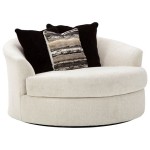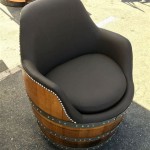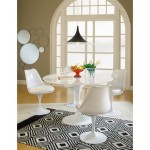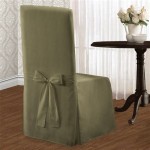Best Stain For Adirondack Chairs: Protecting and Beautifying Your Outdoor Furniture
Adirondack chairs are a timeless addition to any outdoor space, offering comfort and style. These chairs, traditionally crafted from wood, are subjected to the elements, making the selection of the correct stain crucial for their longevity and aesthetic appeal. The best stain not only enhances the wood's natural beauty but also provides essential protection against moisture, UV rays, and mildew. This article will explore the factors to consider when selecting a stain for Adirondack chairs, compare different types of stains, and offer guidance on application techniques for optimal results.
Understanding the Importance of Stain for Adirondack Chairs
Untreated wood, especially when exposed to outdoor environments, is susceptible to a range of damaging factors. Moisture can lead to rot and decay, weakening the wood structure and shortening its lifespan. Ultraviolet (UV) radiation from the sun can cause the wood to fade, discolor, and degrade. Temperature fluctuations can cause the wood to expand and contract, leading to cracks and splits. Furthermore, mold and mildew can thrive in damp conditions, staining the wood and creating an unsightly appearance.
Stain serves as a protective barrier against these elements. It penetrates the wood fibers, providing a layer of resistance against moisture and UV rays. Some stains also contain mildewcides, which prevent the growth of mold and mildew. Beyond protection, stain enhances the natural beauty of the wood. It can accentuate the grain pattern, add color, and provide a consistent finish that complements the surrounding landscape.
Choosing the correct stain is an investment in the longevity and appearance of Adirondack chairs. By selecting a high-quality stain that is specifically formulated for outdoor use, owners can ensure that their chairs remain attractive and functional for many years to come.
Types of Stains for Adirondack Chairs
There are several types of stains available for Adirondack chairs, each with its own set of advantages and disadvantages. The primary categories are oil-based stains and water-based stains. Within these categories, there are also variations in opacity, ranging from transparent to solid.
Oil-Based Stains: Oil-based stains are known for their deep penetration into the wood, providing excellent protection against moisture. They typically enhance the wood's natural grain and offer a rich, warm tone. Oil-based stains tend to be more durable and resistant to wear and tear than water-based stains. However, they can take longer to dry and require mineral spirits for cleanup. They also emit volatile organic compounds (VOCs), which can be harmful to the environment and human health.
Water-Based Stains: Water-based stains are becoming increasingly popular due to their lower VOC content and ease of cleanup. They dry quickly and offer a wide range of colors. Water-based stains are also less likely to fade or chalk over time. While they may not penetrate the wood as deeply as oil-based stains, advancements in technology have significantly improved their durability and performance. Water-based stains are generally considered to be more environmentally friendly than oil-based stains.
Opacity Levels: The opacity of the stain affects the amount of wood grain that is visible after application. Transparent stains allow the natural grain to show through completely, while semi-transparent stains provide a hint of color while still revealing the grain pattern. Semi-solid stains offer more color coverage, obscuring some of the grain, and solid stains completely cover the wood, acting more like paint than stain. The choice of opacity depends on personal preference and the desired aesthetic.
When selecting a stain type, consider the following factors: desired color and finish, level of protection needed, environmental impact, and ease of application and cleanup.
Key Considerations When Choosing a Stain
Numerous factors influence the selection of the best stain for Adirondack chairs. Material, color, UV protection, ease of application, and durability are each key considerations to keep in mind.
Wood Type: The type of wood used to construct the Adirondack chairs will significantly impact the stain's performance. Some woods, like cedar and redwood, are naturally resistant to rot and decay, while others, like pine, are more susceptible. For less durable woods, a stain with enhanced moisture protection is essential. Also, the wood's natural color and grain pattern will influence how the stain appears. It is always recommended to test the stain on a small, inconspicuous area of the chair before applying it to the entire surface.
Color and Finish: The color of the stain should complement the surrounding outdoor environment and reflect personal preferences. Consider the color of the house, landscaping, and other outdoor furniture when choosing a stain. The finish, whether matte, satin, or gloss, will affect the chair's overall appearance. Matte finishes tend to look more natural, while gloss finishes offer a more polished look. The chosen finish will also impact the durability of the stain. Glossier finishes are often more resistant to scratches and scuffs.
UV Protection: Ultraviolet (UV) radiation from the sun is a major cause of fading and discoloration in wood. Therefore, it is essential to choose a stain that offers adequate UV protection. Look for stains that are specifically formulated for outdoor use and contain UV inhibitors. These inhibitors will help to block the harmful effects of the sun, preserving the stain's color and preventing the wood from degrading.
Ease of Application: The ease of application is another important consideration, especially for those with limited experience in staining. Some stains are easier to apply than others, requiring fewer coats and drying more quickly. Consider the application method, whether brushing, spraying, or wiping, and choose a stain that is compatible with the preferred method. Also, factor in the cleanup process and whether the stain requires mineral spirits or soap and water for cleaning brushes and equipment.
Durability and Longevity: The durability of the stain will determine how long it lasts before needing to be reapplied. A high-quality stain will provide long-lasting protection against moisture, UV rays, and mildew, reducing the need for frequent maintenance. Look for stains that are formulated to withstand the harsh outdoor conditions and are resistant to cracking, peeling, and fading.
Application Techniques for Optimal Results
Proper application techniques are crucial for achieving optimal results when staining Adirondack chairs. Careful preparation, application, and maintenance are all essential steps to take.
Preparation: Start by thoroughly cleaning the Adirondack chairs to remove any dirt, grime, or existing finish. Use a mild detergent and water to wash the chairs, and then rinse them thoroughly. Allow the chairs to dry completely before proceeding. If the chairs have an existing finish, sand them down to bare wood using fine-grit sandpaper. This will create a smooth surface for the stain to adhere to. Remove all sanding dust with a tack cloth.
Application: Apply the stain evenly, following the manufacturer's instructions. Use a high-quality brush, sprayer, or rag to apply the stain, depending on the type of stain and the desired finish. Work in the direction of the wood grain to ensure a uniform appearance. Avoid applying too much stain, as this can lead to drips and runs. If necessary, apply a second coat of stain after the first coat has dried completely. Allow the stain to dry thoroughly before using the chairs.
Maintenance: To prolong the life of the stained Adirondack chairs, perform regular maintenance. Clean the chairs periodically with a mild detergent and water to remove any dirt or grime. Inspect the chairs for any signs of damage, such as cracks or splits, and repair them promptly. Reapply the stain every one to two years, or as needed, to maintain the protective barrier and aesthetic appeal.
By following these application techniques and maintenance tips, owners can ensure that their Adirondack chairs remain beautiful and protected for many years to come. Proper care and attention will extend the life of the chairs and enhance the enjoyment of outdoor spaces.

Staining Tips For Adirondack Chairs And New Planters Ugly Duckling House

How To Stain An Adirondack Chair Olympic

How To Stain An Adirondack Chair Olympic

How To Stain An Adirondack Chair Olympic

Caring For Stained Wood Adirondack Furniture Tbacc Blog The Best Chair Company

Best Finish For A Mahogany Adirondack Chair

The Best Adirondack Chair Treatment Video

Articles About Best Adirondack Chair Plans Olympic

Staining Tips For Adirondack Chairs And New Planters Ugly Duckling House

The Best Adirondack Muskoka Chair Colour Chairs








